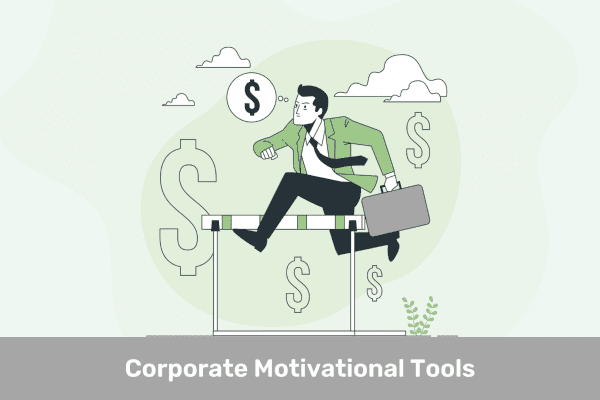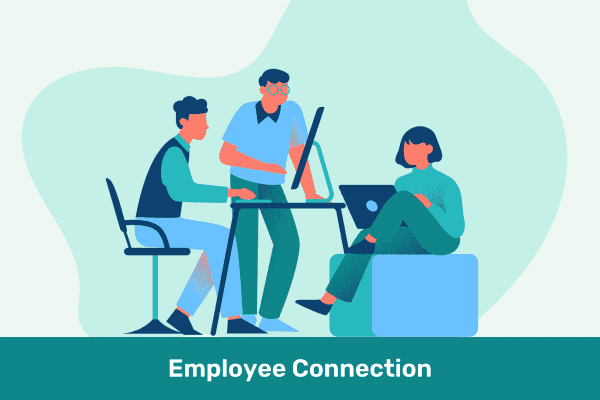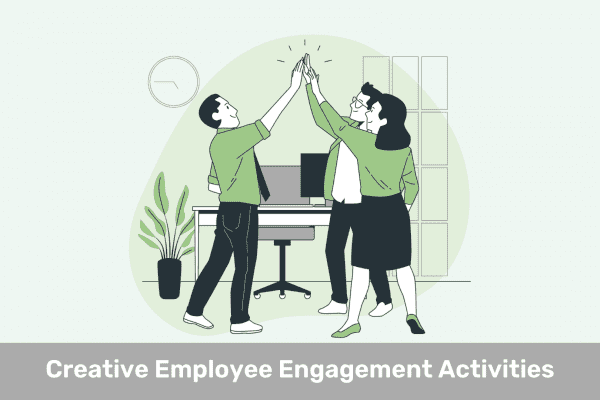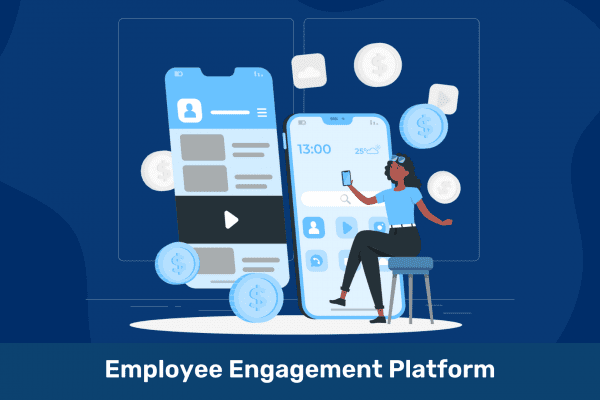You’ve seen newspaper articles talking about how much time employees waste on Facebook at work. Yet employers shouldn’t focus too heavily on incidences of time clock theft. Employees waste time elsewhere too, such as approximately six business weeks each year on pointless busy work.
If someone could crack the code to employee productivity, it would change the world. Until then, the best we can do is try to build an engaged, morale-driven workplace. That starts with what you, the employer, do for employee satisfaction.
In this guide, we’ll give you 5 ways to keep employees engaged and productive.
5 Ways to Keep Employees Engaged and Productive
1. Financial Incentive

Let’s not beat around the bush. Approximately 41% of all employees feel that they are underpaid. Only 37% believe their salary can keep up with the pace of inflation.
Now, this isn’t to say that you need to increase your pay scales. It is, though, a reminder that the primary influencing factor for people to come to work is money. You can see this in the fact that approximately half of Americans wouldn’t recommend their job to somebody else.
One of the primary motivating factors for the average employee is financial compensation. If they can’t get this through their salary, then there’s still another solution: performance incentives.
How to Build Incentive Programs
Many companies have seen great success by implementing a rewards program. Simply put, employees get rewards when they reach certain performance thresholds. This might mean exceeding a requisite number of overtime hours or onboarding the most new clients.
These reward programs excel when they work as a competition among employees. You can easily boost employee morale by gamifying success indicators.
The incentives don’t necessarily need to be large, either. Often the promise of a simple $25 gift card is enough to drive competition. People will do their best if they know there’s a sweet reward for their efforts–such as a free dinner at a local restaurant.
Benefits of Rewards Programs
People love the satisfaction of earning something for themselves. For this reason, so many people choose a passion career that pays less over one with better financial security. For most, employee satisfaction is superior to a high salary.
At the end of the day, a rewards program is a cost-effective solution to drive employee productivity. Corporate engagement strategies will always be successful when money is on the line. A rewards program can provide additional impetus for employees struggling to keep up morale in the workplace.
Plus, you get higher employee retention. Turnover is the bugbear of HR departments the world over. You make it easier for an employee to choose to stay when they have something to look forward to–such as rewards.
2. Employee Recognition

Money isn’t the only motivator to improve employee satisfaction. People want to feel good about their efforts as much as receive compensation for them. We crave the approbation of our peers, even in an office setting.
That’s why employee recognition takes a close second after reward programs. It’s one of the main things people will recommend to small businesses for employee engagement.
Unfortunately, it’s all too common to find an office where employees work thankless jobs. At most, they get a weekly email commending them for their work–in a vague, non-specific way. It’s hard to do your best job–or care–if you get the feeling that nobody notices.
Getting to shake the boss’s hand for a job well done sure means a lot. But what else can businesses do to recognize their employees?
Implementing an Employee Recognition Program
One of the most straightforward ways to give employees a proper pat on the back is through a recognition platform. This platform leverages a type of employee recognition that is just as valuable: co-worker recognition.
Of course, people can always congratulate each other when slogging side by side in the trenches. But a platform centralizes recognition into a single location.
It makes it easy to recognize someone when you didn’t get the chance previously. When things get busy at work, you don’t risk losing the opportunity to honor a hard worker.
Most importantly, it puts the excelling employee front and center. They don’t just get recognition from one person, but rather from the whole team. Others can chime in and congratulate them for their hard work, too.
3. Workplace Culture

Workplace culture is one of the first selling points that many companies point to in job ads. It’s so important that it often comes before salary or benefits packages. As we mentioned in the previous section, people prioritize satisfaction over making big money.
It’s difficult to provide a formula for creating an organic workplace culture. Oftentimes, it arises on its own. However, there are ways to promote it with corporate strategies.
Employee Engagement Platform
One of the best ways to jumpstart company culture is with the help of an engagement platform. This provides a bird’s eye view of how effective your employee engagement strategies are.
An engagement platform leverages data to gain insights into the employee experience. It does this through service and engagement diagnosis tools. With that data in mind, you can then build more successful strategies.
Read Further:
Why Your Business Needs an Employee Engagement Platform
Incentivize Participation
We mentioned how important it is to incentivize employees to do what they do best. Rewards programs tend to focus on employee performance. Thankfully, your employee engagement platform can reward people for giving feedback through surveys.
Get Easy Survey Templates
Not sure what to ask employees? Not a problem. Your employee recognition platform comes with survey templates that are very easy to customize.
You won’t even have to score the surveys. AI will do it for you and provide the results–with analytics to glean important trends and averages.
4. Employee Wellness

A person’s health is closely tied to their ability to maximize productivity. It just makes sense that someone who is fatigued, under the weather, or overworked can’t give it their all.
Unfortunately, humans are far more sedentary than our ancestors. We sit for long hours in uncomfortable chairs, behind desks that hurt our wrists. Then we climb into a car and drive home, rather than walk.
Most people solve this problem with a gym subscription or an evening run. However, it’s hard to stay motivated on your own. That’s where a person’s job comes in: their employer can promote a health-centric workplace.
People spend eight hours per day in your office. They must get encouragement here to have good health habits, just as much as anywhere else.
Implementing a Corporate Wellness Program
An employee wellness platform is the best way to start any sort of health program. It’s a combination of several things: physical challenges, team competitions, and health resources.
Are people looking a bit stressed out? An employee wellness platform allows you to call an emergency meditation session. This gives everyone a chance to take a deep breath, step back, and disengage for a brief spell.
These are team-focused activities, so they serve as excellent bonding tools as well. However, you can scale them up to an entire company. Even if your team works across the globe, you have the option to unify them in their wellness goals.
Also Read:
How to Start a Corporate Wellness Program?
Access to Wellness Resources
Education is one of the best ways to fight poor health. Many people simply do not realize the things that they are doing which negatively affect their health. These can be small things, such as slouching at their desks or buying fast food over home-cooked meals.
Education and awareness can provoke a big change in the mindset of people at the office. Providing free resources to them means they have more opportunities to work on their health. This is an excellent option for people who want to focus on health challenges alone, rather than as a team.
5. Building an Office that Feels Like Home

Last but not least, the office where people work needs to drive engagement and productivity. The programs in the office culture are good, but they don’t mean much if the workplace itself is lackluster.
Many employees long for ergonomic chairs, tables, and decent work computers or work tools. They want to be able to labor in peace with divider cubicles. Contrary to popular belief, the open office model is terrible for productivity.
Include amenities that your employees might want. A comfy break room is a big plus. Some break rooms go above and beyond by adding sleeping pods, great coffee, or other perks for employees only.
If you have a sizable work campus, then make this location the sort of place that people look forward to visiting. In short, make your office a home–and a welcoming one at that.
Boost Productivity and Engagement with Woliba
Now you know 5 ways to keep employees engaged and productive. It starts with finding the right motivational incentives, such as rewards programs and employee recognition. Don’t forget about employee wellness and creating a home-like office for them to work at.
Woliba provides comprehensive solutions for employers who want to build the best workplaces. Check out our pricing models and find one that works for you.





